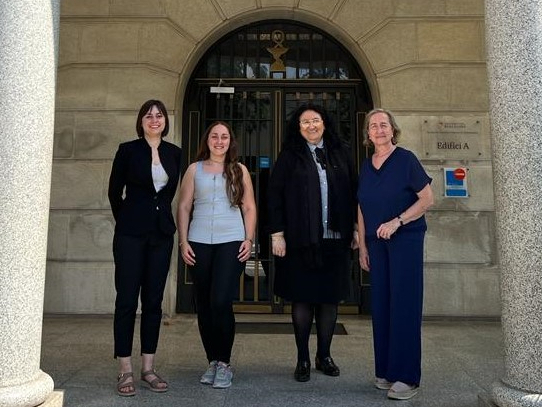
Nanoparticles as a treatment for dry eye disease
Dry eye syndrome is a multifactorial disease of the ocular surface characterised by loss and deterioration of tear film quality, often leading to inflammation of the eye’s surface. An estimated 253 million people in Europe are affected by this syndrome, 60% of whom are over the age of 45.
To solve this problem, the University of Barcelona (UB) has developed a sterile ophthalmic solution containing natural compounds with long-lasting moisturising effects. This technology will be of great benefit to patients, as it will have a curative and preventive effect on dry eye. In the long term, it also provides prolonged moisturising and soothing action, and has other potential therapeutic properties, such as anti-inflammatory, antibacterial, and antimicrobial effects.
This project has been carried out by the University of Barcelona’s Research Group on Nanostructured Systems for Prolonged Drug Development, which has extensive experience in the optimisation of nanoparticles for controlled drug delivery and proven expertise in the development of ophthalmic applications. Research is led by Dr Elena Sánchez and Dr María Luisa García, from the UB’s Faculty of Pharmacy and Food Sciences.
The current therapy for dry eye disease is the production of artificial tears in the form of eye drops, gels, and ointments. But there are still some problems to be solved, such as the fact that artificial tears lack anti-inflammatory properties and do not treat the primary pathogenesis of the disease. Anti-inflammatory drugs are used to treat inflammation, but prolonged use of these drugs has serious side effects, such as increased eye pressure and cataract formation. Moreover, in current formulations, less than 5% of the initial dose reaches upper eye layers.
All these shortcomings of current therapies would be solved with the UB’s technology. This technology has a number of technical advantages, such as the fact that the nanoparticles developed are sterile, biocompatible, biodegradable and produced through green synthesis; that it includes a new ocular delivery system with improved stability; and that the sustained release of nanoparticles increases their bioavailability.
The research group has already carried out the development, optimisation and validation, both in vivo and in vitro, of the selected nanoparticles. In addition, these nanoparticles, following European regulations, would be considered a medical device for direct sale to the consumer without the need for a prescription, which would speed up their development and their arrival to market. As a result, the technology is ready to be transferred.
Photo: From left to right: Elena Sánchez López, Lorena Bonilla Vidal, María Luisa García López, Marta Espina García.

